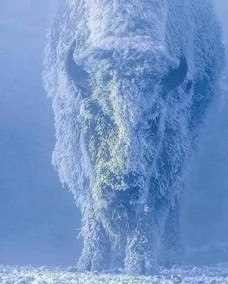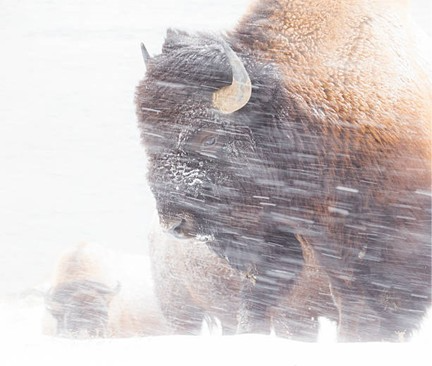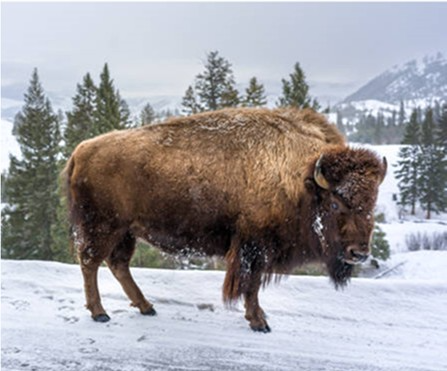The Resilience of Buffalos
Good Friday afternoon, everyone:
Our friend Jamie Bennett – he of the Columbia University President’s House, the National Endowment for the Arts Chair’s office, and the ArtPlace impresario’s perch – is such a keen observer of social media that he happened on this post from National Geographic’s Facebook page (I think that’s how it works):

Bison are the only animal that turn into a snowstorm
rather than away from it because they instinctively know
that walking into the storm will get them out of the weather quicker.
There may be a life lesson for humans in this.
I’m not sure you need me to translate, embellish, or even riff on the profundity of this. Because, of course, the post is correct: there is a lesson for humans in all of this.
Contemplating a snowstorm is a helpful launch-point. As a lapsed Minnesotan, I’ve witnessed snowstorms whose ferocity was terrifying, but passed quickly . . . snowstorms that morphed slowly but inexorably into destructive ice-coated disasters . . . snowstorms whose gentleness made staying in the Midwest for Christmas worth it all . . . snowstorms that challenged our ability to find clear passage . . . snowstorms that just wouldn’t stop until the high school basketball tournament was over. So, what kind of snowstorm do we find ourselves in? Probably not the lovely Christmas kind. But maybe some combination of the other kinds: treacherously precarious, agonizingly protracted, potentially even deadly. And yet, of the season.
Onto the bison then. They do have a choice, presumably. They’re fast, so they could try to move in the same direction and try to outrun the storm. They’re big (terrifyingly big – I turned a corner once while running in the Black Hills and witnessed quite personally just how big they are), so they might opt just to lie down until the storm passes. They’re herd animals, so I suppose they could just circle and hope to shield one another from the worst of things.
But they do none of those things, instead choosing to walk straight into the storm. No prevarication. No angling off to the right. No turning around and giving up. Simply bracing themselves and putting one hoof in front of the other. They may come out a little worse for the wear, but they have spent the least possible time getting to the other side:

And, most importantly perhaps, they presumably emerge more resilient, maybe even stronger:

I leave to all of you to draw your own metaphoric conclusions.
Rip